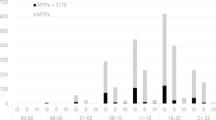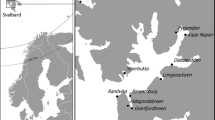Abstract
There is growing awareness in Europe of the importance of ponds, and increasing understanding of the contribution they make to aquatic biodiversity and catchment functions. Collectively, they support considerably more species, and specifically more scarce species, than other freshwater waterbody types. Ponds create links (or stepping stones) between existing aquatic habitats, but also provide ecosystem services such as nutrient interception, hydrological regulation, etc. In addition, ponds are powerful model systems for studies in ecology, evolutionary biology and conservation biology, and can be used as sentinel systems in the monitoring of global change. Ponds have begun to receive greater protection, particularly in the Mediterranean regions of Europe, as a result of the identification of Mediterranean temporary ponds as a priority in the EU Habitats Directive. Despite this, they remain excluded from the provisions of the Water Framework Directive, even though this is intended to ensure the good status of all waters. There is now a need to strengthen, develop and coordinate existing initiatives, and to build a common framework in order to establish a sound scientific and practical basis for pond conservation in Europe. The articles presented in this issue are intended to explore scientific problems to be solved in order to increase the understanding and the protection of ponds, to highlight those aspects of pond ecology that are relevant to freshwater science, and to bring out research areas which are likely to prove fruitful for further investigation.
Similar content being viewed by others
References
Angélibert, S., N. Indermuehle, D. Luchier, B. Oertli & J. Perfetta, J. 2007. Where hides the aquatic biodiversity in the Canton of Geneva (Switzerland)? Archives des Sciences (in press).
Becerra Jurado, G., M. Masterson, R. Harrington & M. Kelly-Quinn, 2007. Evaluation of sampling methods for macroinvertebrate biodiversity estimation in heavily vegetated ponds. Hydrobiologia doi:10.1007/s10750-007-9217-8.
Biggs, J., P. Williams, P. Whitfield, P. Nicolet & A. Weatherby, 2005. 15 years of pond assessment in Britain: results and lessons learned from the work of Pond Conservation. Aquatic Conservation: Marine and Freshwater Ecosystems 15: 693–714.
Blaustein, L. & S. S. Schwartz, 2001. Why study ecology in temporary pools? Israel Journal of Zoology 47: 303–312.
Boix, D., S. Gascón, J. Sala, A. Badosa, S. Brucet, R. López-Flores, M. Martinoy, J. Gifre & X. D. Quintana, 2007. Patterns of composition and species richness of crustaceans and aquatic insects along environmental gradients in mediterraean water bodies. Hydrobiologia doi:10.1007/s10750-007-9221-z.
Céréghino, R., A. Ruggiero, P. Marty & S. Angélibert, 2007. Biodiversity and distribution patterns of freshwater invertebrates in farm ponds of a southwestern French agricultural landscape. Hydrobiologia doi:10.1007/s10750-007-9219-6.
Chase, J. M. & W. A. Ryberg, 2004. Connectivity, scale-dependence, and the productivity–diversity relationship. Ecology Letters 7: 676–683.
Copp, G. H., S. Warrington & K. J. Wesley, 2007. Management of an ornamental pond as a conservation site for a threatened native fish species, crucian carp Carassius carassius. Hydrobiologia doi:10.1007/s10750-007-9220-0.
Davies, B. R., J. Biggs, P. J. Williams, J. T. Lee & S. Thompson, 2007. A Comparison of the catchment sizes of rivers, streams, ponds, ditches and lakes: implications for protecting aquatic biodiversity in an agricultural landscape. Hydrobiologia doi:10.1007/s10750-007-9227-6.
Davies, B. R., 2005. Developing a Strategic Approach to the Protection of Aquatic Biodiversity. PhD thesis, Oxford Brookes University.
De Bie, T., S. Declerck, K. Martens, L. De Meester & L. Brendonck, 2007. A comparative analysis of cladoceran communities from different water body types: patterns in community composition and diversity. Hydrobiologia doi:10.1007/s10750-007-9222-y.
De Meester, L., S. Declerck, R. Stoks, G. Louette, F. Van de Meutter, T. De Bie, E. Michels & L. Brendonck, 2005. Ponds and pools as model systems in conservation biology, ecology and evolutionary biology. Aquatic Conservation: Marine and Freshwater Ecosystems 15: 715–726.
Declerck, S., T. De Bie, D. Ercken, H. Hampel, S. Schrijvers, J. Van Wichelen, V. Gillard, R. Mandiki, B. Losson, D. Bauwens, S. Keijers, W. Vyverman, B. Goddeeris, L. De Meester, L. Brendonck & K. Martens, 2006. Ecological characteristics of small ponds: associations with land-use practices at different spatial scales. Biological Conservation 131: 523–532.
Della Bella, V., M. Bazzanti, M. G. Dowgiallo & M. Iberite, 2007. Macrophyte diversity and physico-chemical characteristics of Tyrrhenian coast ponds in central Italy: implications for conservation. Hydrobiologia doi:10.1007/s10750-007-9216-9.
Gascón, S., D. Boix, J. Sala & D. Quintana, 2007. Relation between macroinvertebrate life strategies and habitat traits in Mediterranean salt marsh ponds (Empordà wetlands, NE Iberian Peninsula). Hydrobiologia doi:10.1007/s10750-007-9215-x.
Jeffries, M., 2005. Local-scale turnover of pond insects: intra-pond habitat quality and inter-pond geometry are both important. Hydrobiologia 543: 207–220.
McAbendroth, L., A. Foggo, S. D. Rundle & D. T. Bilton, 2005. Unravelling nestedness and spatial pattern in pond assemblages. Journal of Animal Ecology 74: 41–49.
Menetrey, N., B. Oertli, M. Sartori, A. Wagner & J. B. Lachavanne, 2007. Eutrophication: are mayflies (Ephemeroptera) good bioindicators for ponds? Hydrobiologia doi:10.1007/s10750-007-9223-x.
Oertli B., D. Auderset Joye, E. Castella, R. Juge, D. Cambin & J. B. Lachavanne, 2002. Does size matter? The relationship between pond area and biodiversity. Biological Conservation 104: 59–70.
Oertli, B., J. Biggs, R. Céréghino, P. Grillas, P. Joly & J. B. Lachavanne, 2005. Conservation and monitoring of pond biodiversity: introduction. Aquatic Conservation: Marine and Freshwater Ecosystems 15: 535–540.
Oertli, B., N. Indermuehle, S. Angélibert, H. Hinden & A. Stoll, 2007. Macroinvertebrate assemblages in 25 high alpine ponds of the Swiss National Park (Cirque of Macun) and relation to environmental variables. Hydrobiologia doi:10.1007/s10750-007-9218-7.
Pyke, C. R., 2005. Assessing suitability for conservation action: prioritizing interpond linkages for the California tiger salamander. Conservation Biology 19: 492–503.
Scheffer, M., G. J. van Geest, K. Zimmer, E. Jeppesen, M. Sondergaard, M. G. Butler, M. A. Hanson, S. Declerck & L. De Meester, 2006. Small habitat size and isolation can promote species richness: second-order effects on biodiversity in shallow lakes and ponds. Oikos 112: 227–231.
Solimini, A. G., M. Bazzanti, A. Ruggiero & G. Carchini, 2007. Developing a multimetric index of ecological integrity based on macroinvertebrates of mountain ponds in central Italy. Hydrobiologia doi:10.1007/s10750-007-9226-7.
Sondergaard, M., E. Jeppesen & J. P. Jensen, 2005. Pond or lake: does it make any difference? Archiv fur Hydrobiologie 162: 143–165.
Warren, P. H. & M. Spencer, 1996. Community and food-web responses to the manipulation of energy input and disturbance in small ponds. Oikos 75: 407–418.
Williams, P., M. Whitfield & J. Biggs, 2007. How can we make new ponds biodiverse?—a case study monitored over 8 years. Hydrobiologia doi:10.1007/s10750-007-9224-9.
Williams, P., J. Biggs, M. Whitfield, A. Thorne, S. Bryant, G. Fox & P. Nicolet, 1999. The Pond Book: A Guide to the Management and Creation of Ponds. Ponds Conservation Trust, Oxford.
Williams, P., M. Whitfield, J. Biggs, S. Bray, G. Fox, P. Nicolet & D. Sear, 2004. Comparative biodiversity of rivers, streams, ditches and ponds in an agricultural landscape in Southern England. Biological Conservation 115: 329–341.
Acknowledgements
We wish to thank the sponsors of the second European Pond Workshop (CNRS, University Paul Sabatier, Laboratoire d’Ecologie des Hydrosystèmes, Région Midi-Pyrénées, Conseil Général de la Haute-Garonne, French Water Agency).
Author information
Authors and Affiliations
Corresponding author
Additional information
Guest editors: R. Céréghino, J. Biggs, B. Oertli and S. Declerck
The ecology of European ponds: defining the characteristics of a neglected freshwater habitat
Rights and permissions
About this article
Cite this article
Céréghino, R., Biggs, J., Oertli, B. et al. The ecology of European ponds: defining the characteristics of a neglected freshwater habitat. Hydrobiologia 597, 1–6 (2008). https://doi.org/10.1007/s10750-007-9225-8
Published:
Issue Date:
DOI: https://doi.org/10.1007/s10750-007-9225-8




